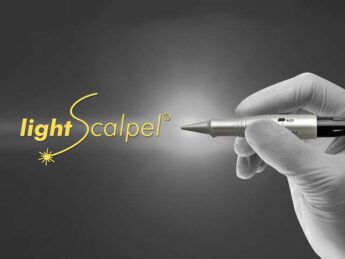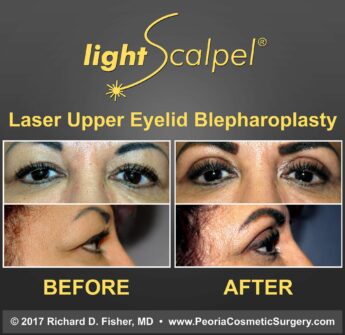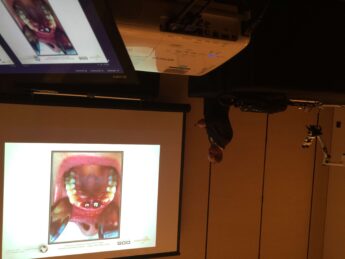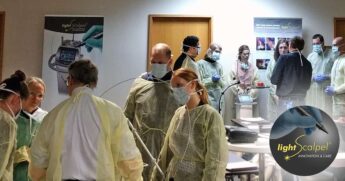A vestibuloplasty is a series of surgical procedures designed to restore alveolar ridge height by lowering the muscles and ligament attached to the buccal, labial, and lingual aspects of the jaws. A vestibuloplasty is performed to enlarge the denture-bearing area and to ensure the comfort, function, and stability of a denture.[1] David E. Stall, DMD, of West Chester, PA, uses his LightScalpel CO2 laser to perform vestibuloplasties in the following 2 cases. In both cases patients needed to gain sufficient vestibular height to ensure better denture stability.
Laser Vestibuloplasty Case # 1
For this patient, Dr. Stall used the LightScalpel CO2 laser at 4 W, 20 Hz, SuperPulse (2 watts average power) with 0.25 mm focal spot size. He also used 5 W of continuous wave for additional hemostasis. First, the upper lip was pulled outward in order to maintain tension on the vestibule throughout the dissection. Then a wide supraperiosteal laser incision was created along the border of the maxillary attached gingiva from the second molar to the second molar contralaterally. No bone grafting was needed. Multiple 5-0 chromic gut sutures were placed to hold released labial mucosa to the periosteum above the release [figure 2]. White-yellowish fibrous coagulum layer, shown in figure 3, served as a protective dressing. This patient did not wear their dentures for the first 2-3 weeks to allow for healing. Healing progressed without complications. This patient gained a minimum of 5 mm, with some areas more. After adequate healing a new denture was made.
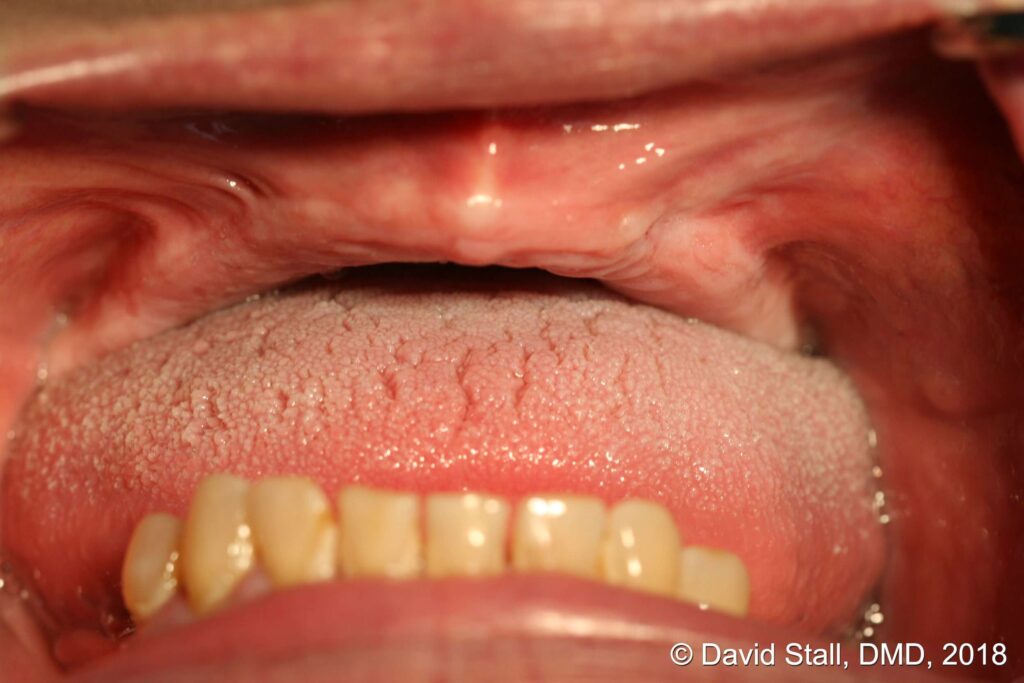
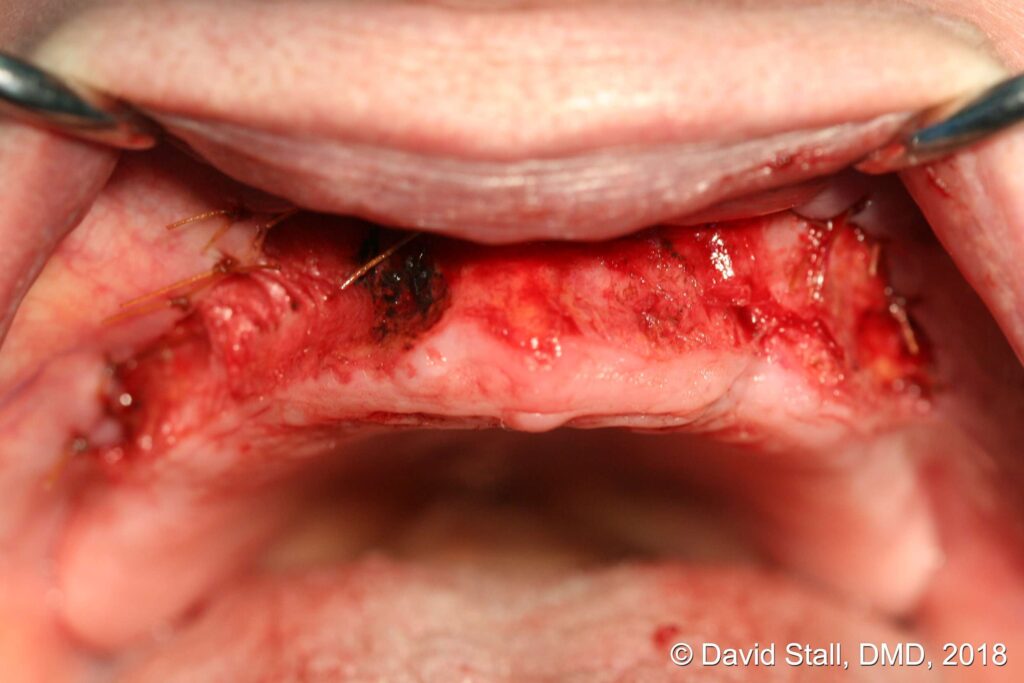
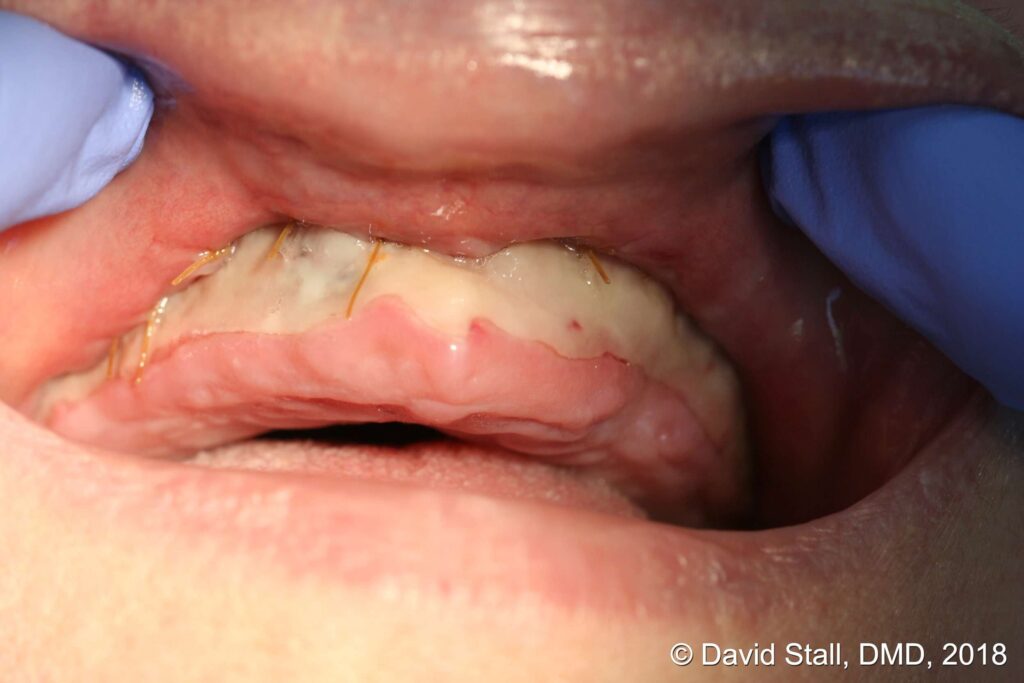

Laser Vestibuloplasty Case # 2
For this patient Dr. Stall used the LightScalpel CO2 laser at 2 watts, 20 Hz, SuperPulsed (1.2 watts of average power) to perform a full vestibuloplasty. The laser focal spot size was 0.25 mm. He placed 10 chromic gut 5-0 sutures to hold the labial mucosa to the periosteum above the releases. This patient gained a minimum of 5 mm, with some areas more. This patient did not wear their dentures for the first 2-3 weeks to allow for healing. After adequate healing the patient’s existing denture was relined.
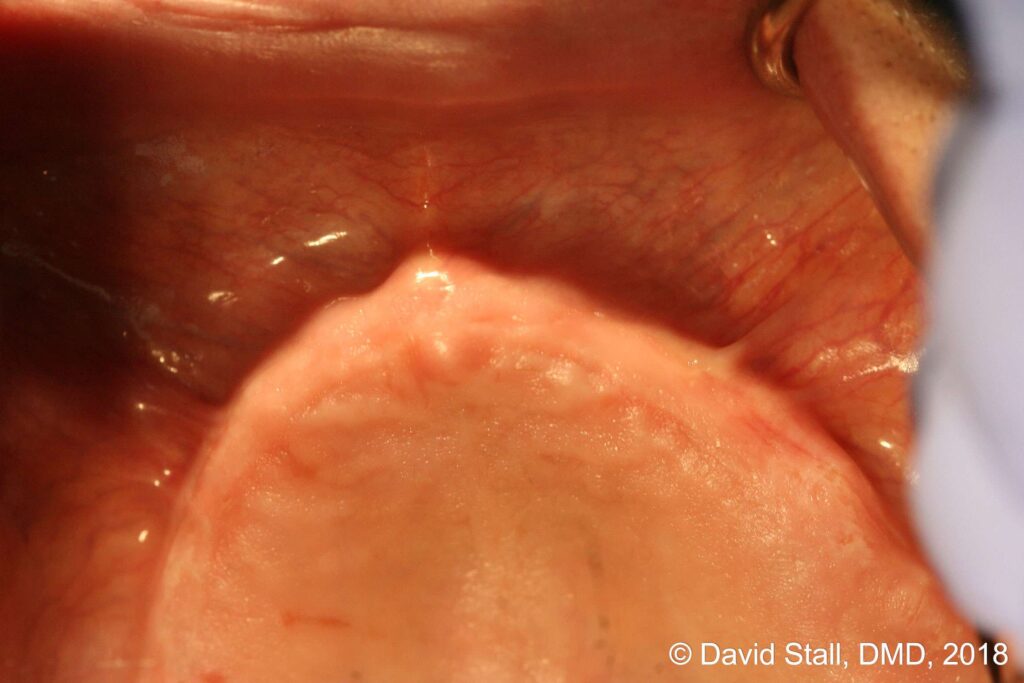
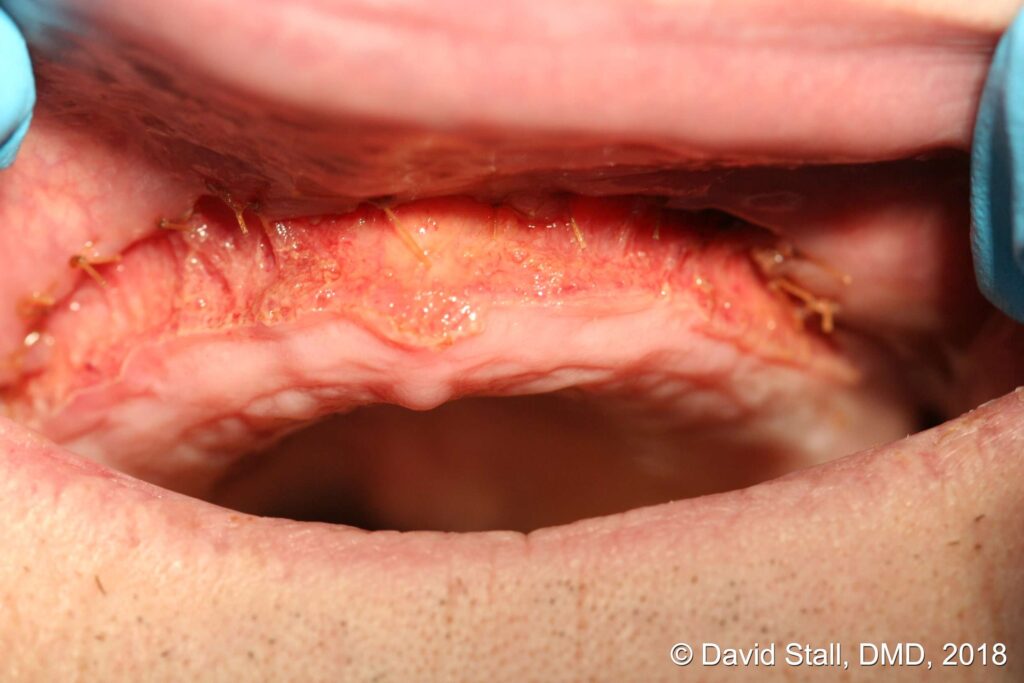
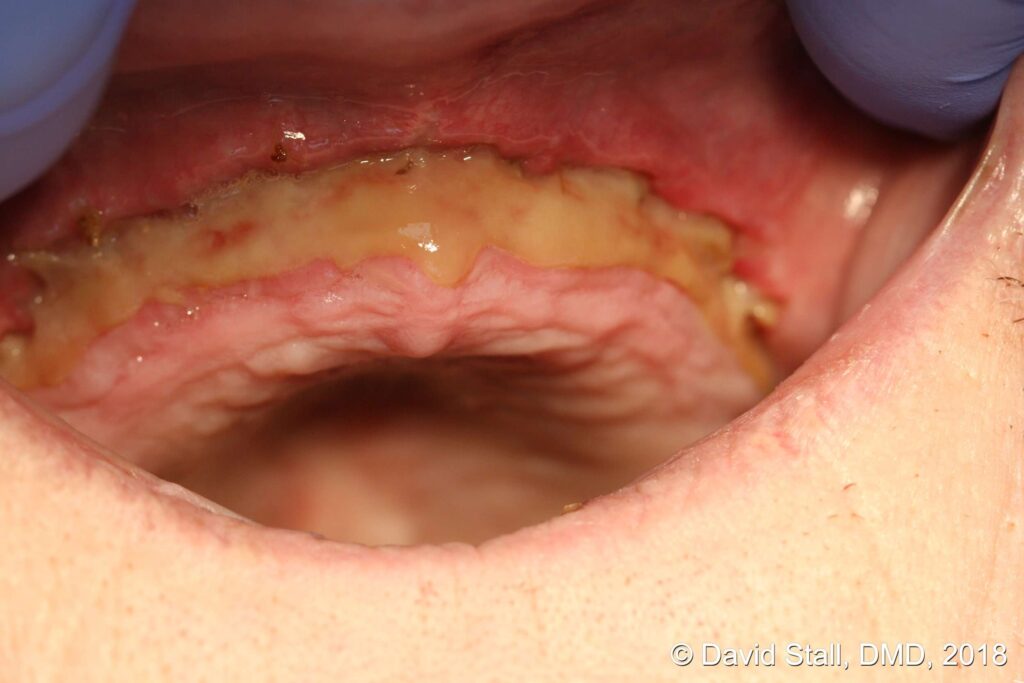
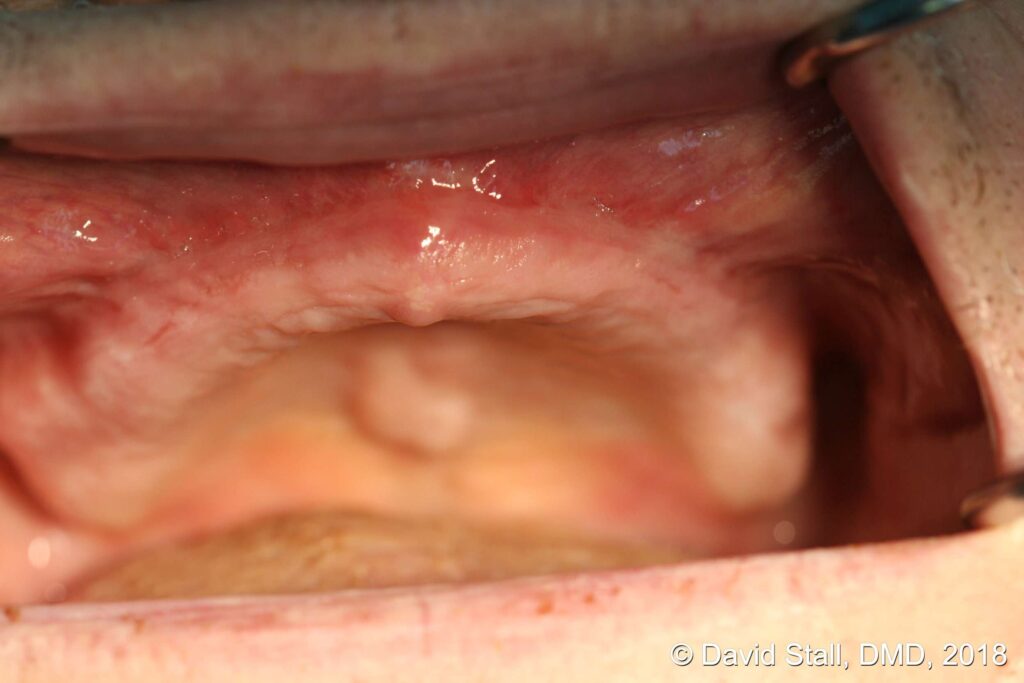
The LightScalpel 10,600-nm CO2 laser offers numerous advantages over traditional methods and other dental laser wavelengths for soft-tissue surgery. Some of these benefits include faster procedure, less bleeding, minimal postoperative swelling, reduced postoperative pain, and good patient acceptance.
References
- Levine R, Vitruk P. The Use of a 10,600-nm CO2 Laser Mandibular Vestibular Extension in a Patient with a Chromosomal Disorder. Compend Contin Educ Dent. 2016 Sept;37(9):527-533.

